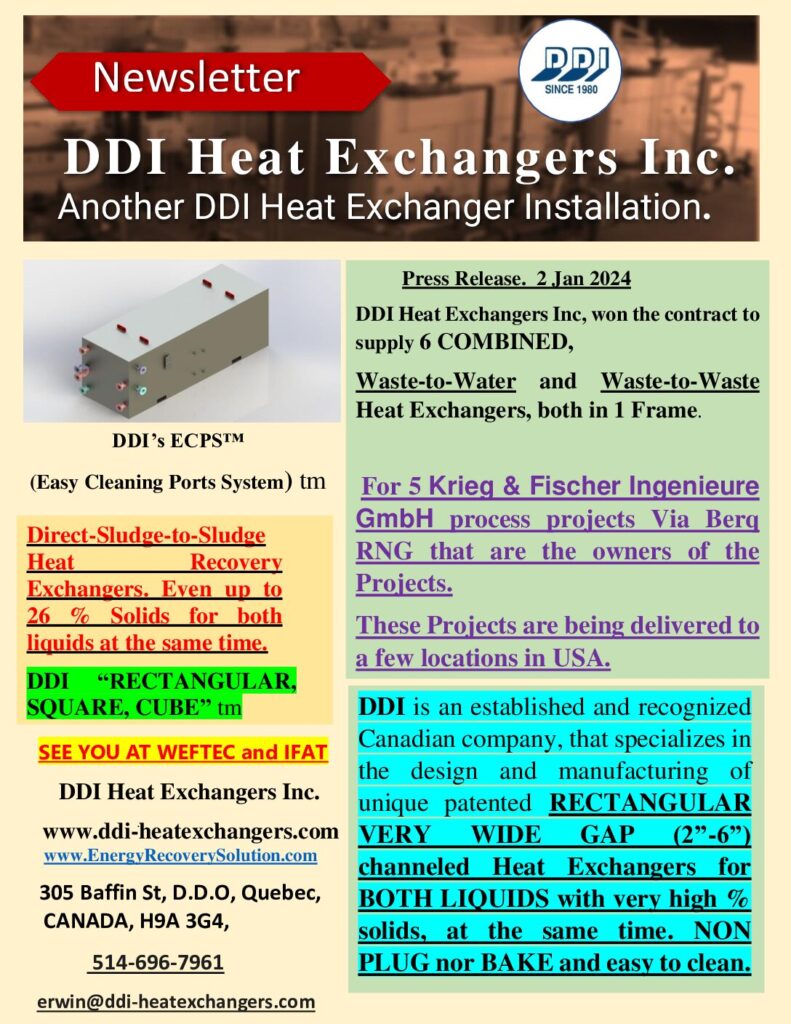Indirect Heating,
Compared to
DDI DIRECT Heat Recovery Exchanger.
1- Indirect heating needs to use 3 Heat Exchangers, COLD RAW Sludge-to-Water, and, Digested Sludge-to-Water and Water-to-Water circulating in between them
While DDI Heat Recovery is Direct Sludge-to-Sludge.
2- Indirect heating needs extra pump to re-circulate the water in between the 2 Heat Exchangers.
3- Indirect heating needs to use Stainless Steel which is more expensive.
4- Indirect heating needs to use Stainless Steel (only 10 Local Heat Transfer Coef., compared to 24 for Carbon Steel). So heat transfer is much worse when using indirect method (by 2.5 factor).
5- The flow of the Intermittent flow of water in a bath is NOT EFFICIENT, Some flow will just go on the sides of the bath from inlet to outlet with out transferring heat to tubes.
6- Indirect heating needs to use VERY THIN 0.08″ thick inner tube. very risky for ABRASIVE Materials like the Cold Raw Sludge in WWTPs.
So they might have HOLES in the inner tubes, within a few years.
DDI Uses 0.25”, mostley 0.375” which is sufficient for Corrosion and Abrasion as well.
7- It is more complicated to use Sludge-to-Water, Water-to-Water and then Water-to-Sludge heating, compared to directly heating Sludge-to-Sludge, as is the DDI “Square” or “Cube” or “Rectangular” Heat Recovery Exchanger.
8– Indirect heating losses 10 % Efficiency in Sludge to Water, then 3 % in Water to Water, then 10 % in Water to Sludge = 23 % efficiency lost.
DDI losses are only once, about 10 %.
9– DDI Heat Recovery Exchangers are more compact. One Heat Exchanger instead of 3.
10– After losing 23%, Indirect heating can lose more via controlling the Intermediate Water flow?.
Why would one want to have LESS of Heat Recovery?
Any how it could be achieved, via By Pass pipes of the Sludge, with much less expense.
11– DDI is in Business since 1980 and manufactures in North America. Indirect heating since 2000 only and manufactures in Europe. DDI has longer North America experience. No sand (erosion) nor straw (plugging) in Europe’s Cow Manure Sludge.

